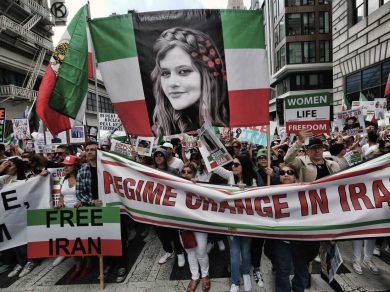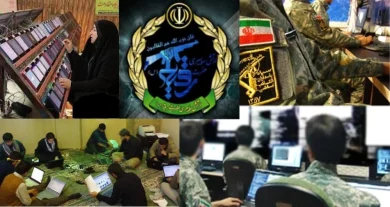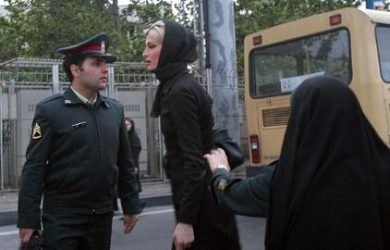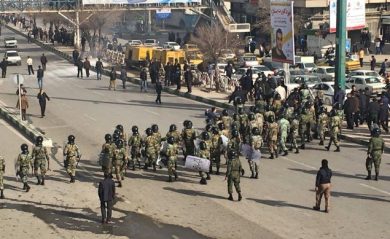For decades, Iranian women have faced institutionalized repression within their homeland—from forced hijab laws to surveillance, arrests, and gender apartheid enforced by the Islamic Revolutionary Guard Corps (IRGC). Many of these women have been forced into exile, either to escape imprisonment or to protect their families and safety.
But exile has not silenced them.
Across the globe, Iranian women in the diaspora have become vocal advocates, activists, journalists, and organizers, using their freedom abroad to amplify the struggles of those still living under oppression inside Iran. They lead protests, speak at international forums, build human rights campaigns, and work relentlessly to keep Iran’s freedom movement in the global spotlight.
This resource explores:
• The role of Iranian women abroad in supporting change.
• How exile fuels resistance, not silence.
• The tactics and tools they use to organize.
• Profiles of leading voices in the diaspora.
• How the world can support these efforts.
1. The Power of Exile: A Continuation of the Struggle
Many Iranian women living abroad were once:
• Protesters on the streets of Tehran.
• Students fighting for education rights.
• Journalists exposing state corruption.
• Mothers seeking justice for their murdered children.
Their decision to leave wasn’t born of surrender—but of survival. And from their new homes in Europe, North America, or elsewhere, these women have transformed exile into activism.
Exile has become an extension of resistance.
They may be far from home, but their hearts and work remain rooted in Iran.
2. Voices Amplified: How Iranian Women Abroad Lead
A. Digital Advocacy
Iranian women in exile are masters of digital activism. With platforms like Instagram, X (formerly Twitter), YouTube, and Telegram, they:
• Broadcast real-time updates during protests inside Iran.
• Share testimonies from imprisoned women.
• Educate global audiences about IRGC violence, hijab laws, and systemic injustice.
Campaigns like:
• #WomenLifeFreedom
• #MahsaAmini
• #FreeIranianWomen
…have reached millions—thanks in large part to diaspora leadership.
B. Lobbying and International Pressure
Women in the Iranian diaspora:
• Testify before the United Nations, European Parliament, and U.S. Congress.
• Lobby governments to sanction IRGC officials and support Iranian civil society.
• Pressure platforms and media to cover Iran’s freedom movement consistently.
They are not just activists. They are ambassadors of truth and change.
3. Iconic Voices of the Diaspora
Masih Alinejad
• A former journalist, Masih is one of the most recognized faces of the Iranian diaspora.
• Founder of the #MyStealthyFreedom campaign, encouraging Iranian women to post hijab-less photos.
• Target of multiple IRGC-backed assassination plots, showing the threat her voice poses to the regime.
Shirin Ebadi
• Nobel Peace Prize laureate and human rights lawyer, forced into exile in 2009.
• Continues to work through international courts to hold the Iranian regime accountable for its abuses.
Roya Hakakian
• Author and activist who uses storytelling and essays to highlight Iran’s political repression and the courage of women protesters.
Nazanin Boniadi
• Actress and prominent human rights advocate, she uses her global platform to raise awareness and advocate for Western governments to take action.
These women are just a few of the many leading the charge from abroad.
4. Supporting the Struggle Back Home
Iranian women in exile offer critical lifelines to activists still in Iran:
• Secure communication tools to bypass surveillance.
• Legal aid for political prisoners.
• Financial support for victims’ families.
• Psychological support networks for trauma survivors.
They are the infrastructure of resistance, helping to sustain morale and momentum across borders.
5. The Psychological Toll of Exile
While they continue to fight, Iranian women in exile also carry deep emotional burdens:
• Guilt for being safe while others suffer.
• Grief for lost friends, family, and home.
• Loneliness in cultures where their struggle is often misunderstood.
Yet, in turning grief into action, they demonstrate remarkable resilience.
As one activist said:
“They took our country from us, but they didn’t take our voices.”
6. Why Their Role Matters More Than Ever
In authoritarian regimes like Iran’s, the diaspora plays a crucial role:
• Voices inside Iran are silenced through arrests, torture, or executions.
• Exiled women keep the narrative alive and the world informed.
• They mobilize pressure and build coalitions internationally.
The regime fears them because they are free—and because they are organized.
7. What the World Can Do
To support Iranian women in exile and their work:
• Share their content. Visibility matters.
• Amplify their campaigns. Use hashtags, join events, write to politicians.
• Support their organizations. Many run legal aid, media, or advocacy groups.
• Demand accountability. Pressure your government to sanction IRGC members and stand with Iranian civil society.
• Listen. Believe their stories. Learn from their leadership.
8. A Future Shaped by Women in Exile
The Iranian women’s movement is one of the most powerful human rights struggles of our time.
Whether inside Iran or abroad, women are leading it—and they will shape Iran’s democratic future.
From London to Los Angeles, from Berlin to Toronto, Iranian women in exile carry hope, truth, and unshakable courage.
Their mission is clear:
“Until Iran is free, none of us will stop.”
Conclusion
Hope in exile is not passive. It is defiant. It is determined.
Iranian women abroad are not waiting—they are fighting from afar, building bridges, fueling movements, and refusing to let the world forget the women inside Iran who are risking everything for freedom.
Their voices echo far beyond borders—and those echoes are shaping a new future for Iran.
Join Our Newsletter!
Stay informed with the latest updates, news, and ways to take action in the fight for justice and global security. Sign up now to get updates delivered straight to your inbox!





